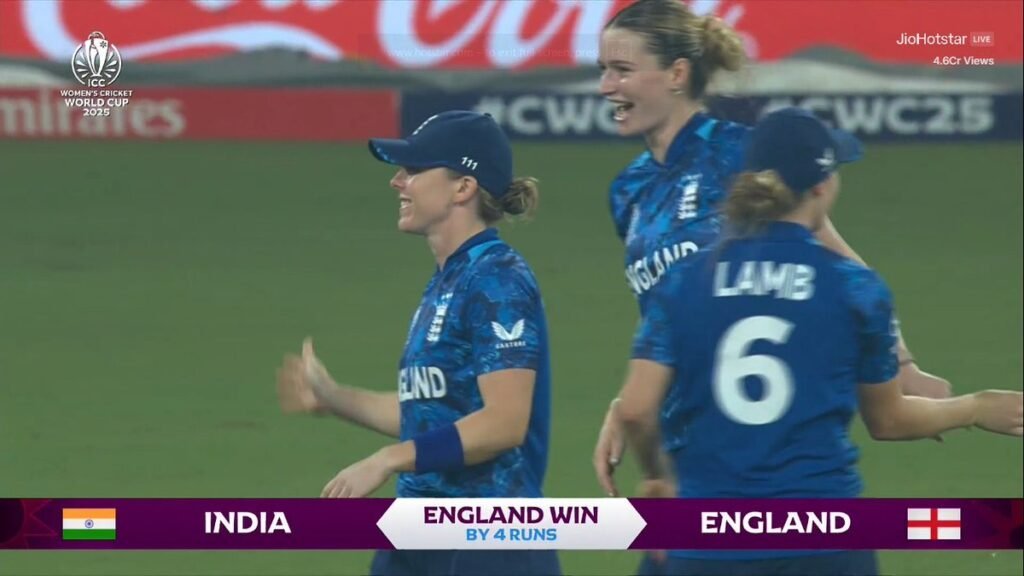
The India women’s cricket team suffered a gut-wrenching defeat against England in their ICC Women’s Cricket World Cup 2025 clash, failing to chase 62 runs in the final 10 overs despite having seven wickets in hand. It was a night that began with promise but ended in heartbreak, as the team let slip a golden opportunity to secure a crucial win that could have strengthened their semi-final hopes.
England batted first and put up a strong total of 288 for 8 in their 50 overs. Their innings was built on solid contributions from the top order, led by Nat Sciver-Brunt and Heather Knight, who steadied the side after an early setback. India’s bowlers, despite showing moments of control, struggled to contain the scoring during the final overs, as England’s lower order chipped in with handy runs to push the total close to the 290 mark.
India’s chase began with confidence and intent. Smriti Mandhana and Shafali Verma gave the team a fluent start, rotating the strike and dispatching loose deliveries to the boundary. Mandhana looked particularly assured, timing the ball beautifully on both sides of the wicket. After the early dismissal of Verma, captain Harmanpreet Kaur joined Mandhana in the middle, and together they crafted a partnership that seemed to have put India in complete control of the chase. By the time Mandhana reached her 80s and Harmanpreet passed fifty, India appeared well on course, needing only 62 runs off the last 10 overs.
At that stage, with seven wickets still in hand, the game looked India’s to lose. But then, the momentum shifted. Mandhana, attempting to up the scoring rate, fell to a mistimed lofted shot. That wicket triggered hesitation within the camp. Boundaries dried up, the running between the wickets became uncertain, and the pressure of the growing required rate began to show. Jemimah Rodrigues and Deepti Sharma, usually calm finishers, struggled to find gaps against disciplined English bowling.
England’s bowlers, led by Sophie Ecclestone and Linsey Smith, bowled with relentless accuracy in the death overs. Ecclestone’s variations and Smith’s flight forced India into taking risks they did not need to. The English fielders backed up their bowlers brilliantly, cutting off singles and stopping boundaries that could have eased the pressure. In the span of five overs, India’s chase stagnated. What once seemed a comfortable pursuit began to look increasingly tense as the asking rate climbed over seven an over.
Harmanpreet Kaur tried to break free with a couple of boundaries, but a sharp return catch ended her stay, and with her dismissal, India’s composure crumbled further. England maintained their grip on the contest, mixing pace and spin smartly to choke the scoring. When the final over arrived, India needed 10 runs to win but could manage only 5, finishing at 284 for 6 — agonizingly short by just four runs.
It was a defeat that hurt deeply because it came from a position of dominance. For India, this match was another reminder of the importance of closing out games under pressure. The batting had brilliance at the top but lacked the calm finishing touch that has often separated the great sides from the rest. England, on the other hand, once again showed why they remain one of the most composed and tactically astute teams in world cricket.
The loss left India facing a tough road ahead in the tournament, while England’s victory confirmed their place in the semi-finals. For the Indian team and their fans, the match will be remembered not just for how close they came, but for how they let it slip away. In the story of the World Cup, this will go down as a painful reminder that in cricket, the last 10 overs can rewrite everything.

